6 more ways programmable OCXOs make design easier
The first blog in our OCXO series focuses on the basics of OCXOs and how the Emerald Platform™, a new MEMS Stratum 3E device, makes design and manufacturing easier by solving the board layout challenges associated with traditional quartz OCXOs. Our second blog discusses key timing stability parameters for telecom applications and compares how MEMS and quartz devices perform under these parameters. Here we circle back to how the Emerald Platform makes design and development easier, highlighting six advantages related to programmability, size, and power.
First, a quick recap of how Emerald solves board-level design and manufacturing issues shown in the following table.
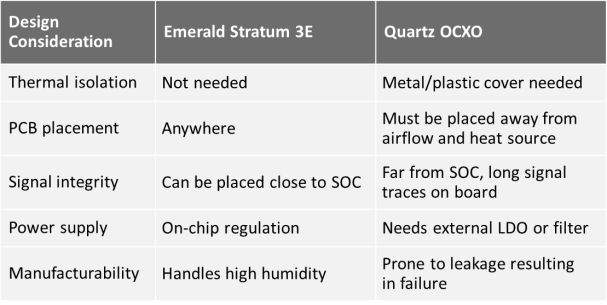
Advantages beyond the board
Legacy quartz OCXOs (oven controlled oscillators) are custom built from the ground up and have severe limitations in features. In contrast, the Emerald Platform is built on a programmable architecture that enables remarkable flexibility, unique features, and short lead-times. In addition, Emerald is vastly superior in SWaP (size, weight, and power). This is important as electronic equipment becomes denser, packing more into less space while aiming to consume less power and require less cooling.
Here’s a list of some of the unique features available in the Emerald lineup.
1. Any frequency—between 1 MHz and 220 MHz with up to 6 decimals of accuracy. This allows designers to select the optimal frequency for their clock tree without any penalty in performance and lead-time.
2. Two output types—LVCMOS and clipped sine-wave, which has slower rise/fall times. This allows designers to choose an output that provides lower jitter or lower EMI, depending on the application needs. MEMS OCXOs with differential output (LVPECL, LVDS, HCSL) are coming soon.
3. I2C serial interface—for in-system programmability. This digital control feature, that will soon be enabled, eliminates the board-level noise that’s associated with traditional VCOCXOs which use analog voltage control. This can also eliminate the low-pass filter required to interface the VCOCXO to the SOC.
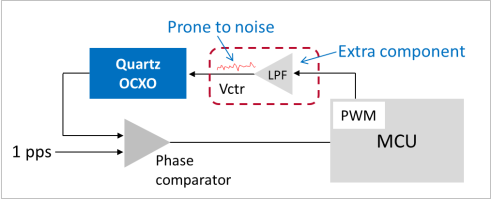
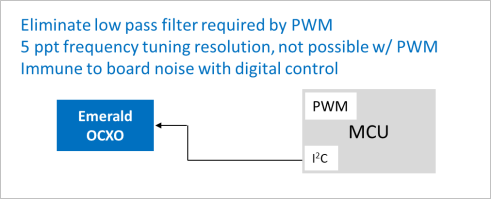
4. Extended operating temperatures—from -40°C to +105°C will be available. This is the widest range for any OCXO and is ideal for outdoor 5G applications where thermal issues can cause problems for system operation.
5. Smallest size—with 9 x 7 mm footprint (75% smaller than quartz) and 6.5 mm height (40% shorter). This eliminates a major obstruction in chassis-based systems and is ideal for high-density small-form-factor systems. Emerald devices are also available in three standard OCXO footprints that can be used as drop-in replacements for quartz.
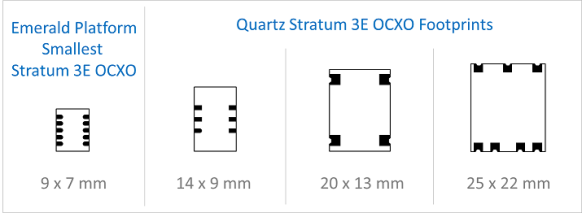
6. Low power consumption—at just 0.6W, which is quite impressive considering these devices operate like small ovens. This is about half of what traditional power-hungry Stratum-3E devices consume, which is well over 1W.
Want to test Emerald features and performance?
Designers can easily examine the benefits of Emerald OCXOs in their system with evaluation and adapter boards (shown below). The evaluation board has SMA output for direct connection to measurement equipment, probing points for accurate waveform measurement, and a connector for easy current measurement.
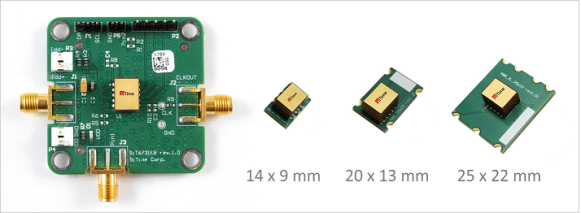
Solving long-standing design problems
The Emerald Platform is engineered to solve the long-standing problems of quartz OCXOs. In addition to solving stability and other performance issues, Emerald solutions provide unprecedented ease-of-use and features never before available. Emerald Platform reduces design complexity and eliminates the headaches associated with quartz devices, leading to better end products and accelerated time to revenue for our customers.
………………………………………………………
Read the next blog in our series on OCXOs to learn why dynamic performance and the timing parameters discussed above are becoming increasingly important in the next generation of 5G equipment.